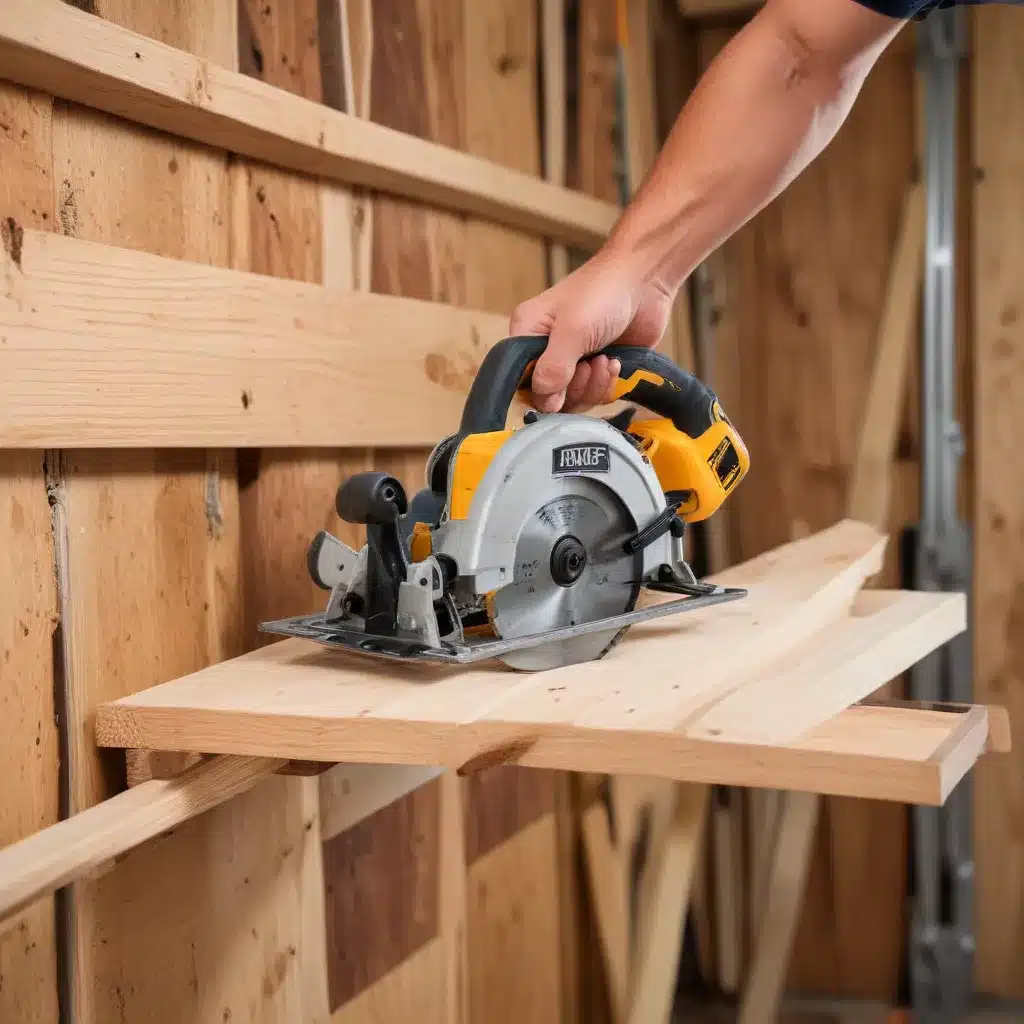
As an experienced home improvement consultant, I’ve seen firsthand how the right saw can make all the difference in the success of your next renovation project. Whether you’re a seasoned DIY enthusiast or a reluctant renovator tackling your first major undertaking, understanding the diverse options and key considerations when choosing a saw can help you work more efficiently, avoid costly mistakes, and achieve professional-looking results.
Types of Saws
The world of saws can be quite extensive, but we can broadly categorize them into three main groups: handsaws, powered saws, and specialty saws. Each type has its own unique capabilities, strengths, and best-suited applications.
Handsaws
Handsaws are manual cutting tools that rely on your physical effort to power the blade. These relatively inexpensive tools are a great starting point for many DIY projects. Some common handsaw varieties include the backsaw, coping saw, dovetail saw, and the ever-versatile hacksaw. Handsaws excel at making precise, controlled cuts, making them ideal for delicate tasks like trim work or fine woodworking. However, they require more time and physical exertion compared to powered saws.
Powered Saws
In contrast, powered saws leverage an electric or battery-operated motor to drive the blade, significantly increasing cutting speed and power. This category includes the ubiquitous circular saw, the precise miter saw, the versatile reciprocating saw, and the jigsaw for intricate cuts. Powered saws are generally better suited for larger-scale projects, heavy-duty materials, and tasks that demand speed and efficiency. They do, however, require more safety precautions and a learning curve to operate effectively.
Specialty Saws
There are also several specialty saw types designed for unique applications. The table saw, for instance, is a workshop staple for ripping and crosscutting wood, while the band saw excels at making tight curves and irregular shapes. These saws often come with advanced features and accessories, making them invaluable for professional contractors or avid hobbyists tackling complex renovations.
Factors to Consider
When selecting the right saw for your home improvement project, there are several key factors to weigh:
Task Requirements
First and foremost, consider the specific cutting tasks your project will entail. Are you mainly working with wood, or will you need to cut through materials like metal, plastic, or drywall? Will you require precision cuts, angled joints, or the ability to handle larger workpieces? Matching the saw’s capabilities to the demands of your project is crucial for success.
Blade Characteristics
The size, tooth configuration, and blade material of a saw can greatly impact its performance. Larger blades, for example, can handle thicker or wider materials, while specialized carbide-tipped or diamond-grit blades excel at cutting through harder substances. Familiarize yourself with these details to ensure you select a saw that can tackle your project’s unique cutting requirements.
Power Source
Another essential factor is the power source. Handsaws require your own physical effort, while powered saws draw from an electrical outlet or rechargeable battery. Corded power tools offer consistent, unlimited runtime, while cordless models provide greater mobility and convenience. Evaluate your project’s needs, access to power sources, and personal preferences to determine the best fit.
Saw Selection Process
With a clearer understanding of the various saw types and key selection criteria, let’s explore the step-by-step process of choosing the right saw for your next home improvement project.
Assessing Project Needs
Begin by carefully assessing the specific cutting tasks your project will entail. Make a list of the materials you’ll be working with, the types of cuts required (e.g., straight, angled, curved), and the size of the workpieces. This will help you identify the saw features and capabilities that are most crucial for your needs.
Evaluating Saw Options
Once you’ve outlined your project requirements, research the available saw options that align with those needs. Refer to trusted sources like the Reluctant Renovator website or tool manufacturer guides to compare features, power, blade specifications, and other relevant details. Don’t be afraid to visit your local hardware store to get hands-on experience with different saws.
Making the Right Choice
With your project’s requirements and saw options in mind, you can now make an informed decision about the best saw for the job. Consider factors like cost, portability, safety features, and the saw’s overall versatility. Remember that investing in a high-quality saw, even if it’s a bit more expensive upfront, can pay dividends in the long run through improved performance, precision, and durability.
Saw Maintenance and Safety
Proper care and safety practices are essential for ensuring your saw remains in top condition and for protecting yourself and your work area.
Proper Care and Cleaning
Regularly clean your saw to remove accumulated dust, debris, and pitch buildup. Pay special attention to the blade, pivot points, and any moving parts, lubricating them as recommended by the manufacturer. Keeping your saw well-maintained will help maintain its cutting accuracy and extend its lifespan.
Safety Precautions
When using any power tool, safety should always be your top priority. Familiarize yourself with the specific safety features and operating instructions for your saw. Wear appropriate personal protective equipment, such as safety glasses, hearing protection, and dust masks. Establish a clean, uncluttered work area, and never operate a saw without securely clamping your workpiece in place.
Protecting Your Investment
Caring for your saw also means protecting your investment. Store your tools properly, keep blades sharp and in good condition, and consider purchasing a saw stand or dust collection system to enhance the tool’s functionality and longevity. By investing in the right saw and maintaining it properly, you can ensure your home improvement projects run smoothly and safely for years to come.
In conclusion, selecting the right saw for your next home improvement project is crucial for achieving professional-looking results, working efficiently, and staying safe. By understanding the different saw types, evaluating your project’s needs, and properly maintaining your tools, you’ll be well on your way to tackling your renovation tasks with confidence. For more valuable insights and inspiration, be sure to visit Reluctant Renovator – your go-to resource for all things home improvement.



